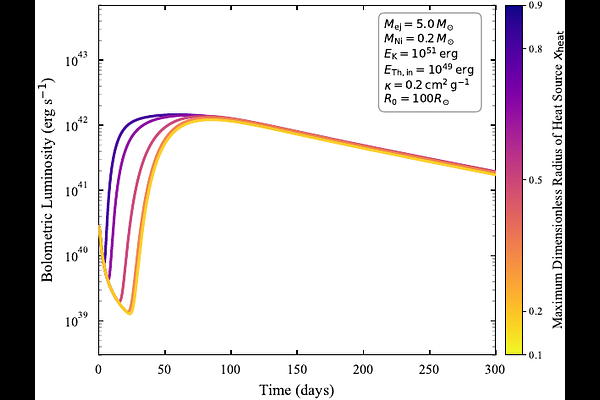TransFit: An Efficient Framework for Transient Light-Curve Fitting with Time-Dependent Radiative Diffusion

TransFit: An Efficient Framework for Transient Light-Curve Fitting with Time-Dependent Radiative Diffusion
Liang-Duan Liu, Yu-Hao Zhang, Yun-Wei Yu, Ze-Xin Du, Jing-Yao Li, Guang-Lei Wu, Zi-Gao Dai
AbstractModeling the light curves (LCs) of luminous astronomical transients, such as supernovae, is crucial for understanding their progenitor physics, particularly with the exponential growth of survey data. However, existing methods face limitations: efficient semi-analytical models (e.g., Arnett-like) employ significant physical simplifications (like time-invariant temperature profiles and simplified heating distributions), often compromising accuracy, especially for early-time LCs. Conversely, detailed numerical radiative transfer simulations, while accurate, are computationally prohibitive for large datasets. This paper introduces TransFit, a novel framework that numerically solves a generalized energy conservation equation, explicitly incorporating time-dependent radiative diffusion, continuous radioactive or central engine heating, and ejecta expansion dynamics. The model accurately captures the influence of key ejecta properties and diverse heating source characteristics on light curve morphology, including peak luminosity, rise time, and overall shape. Furthermore, TransFit provides self-consistent modeling of the transition from shock-cooling to $^{56}$Ni}-powered light curves. By combining physical realism with computational speed, TransFit provides a powerful tool for efficiently inverting LCs and extracting detailed physical insights from the vast datasets of current and future transient surveys.